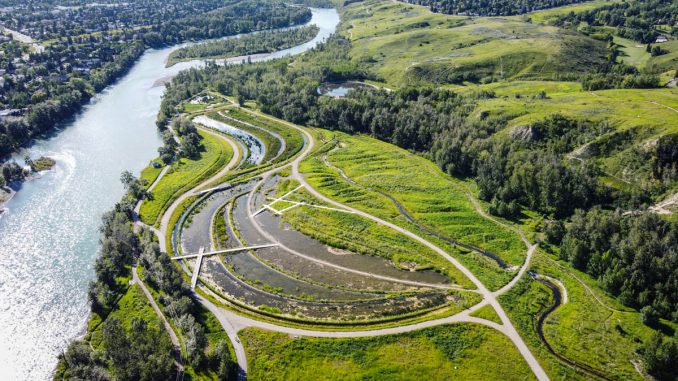
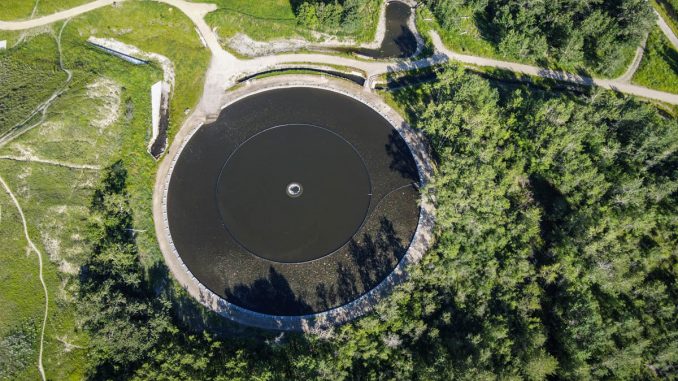
Dale Hodges Park is a transformative landscape along the Bow River in Calgary. The project was born of the need to restore the environmental health of a former quarry while addressing stormwater treatment opportunities for runoff from over 1,700 hectares of the adjacent urban area. Located within an existing 164-hectare river valley park, the site adds 40 hectares of integrated parkland, stormwater treatment facilities, and one of the largest public artworks in North America. The park concept highlights the journey of stormwater in the landscape through a series of curated experiences, collaboratively designed with The City’s Parks, Water Resources and Public Art departments.
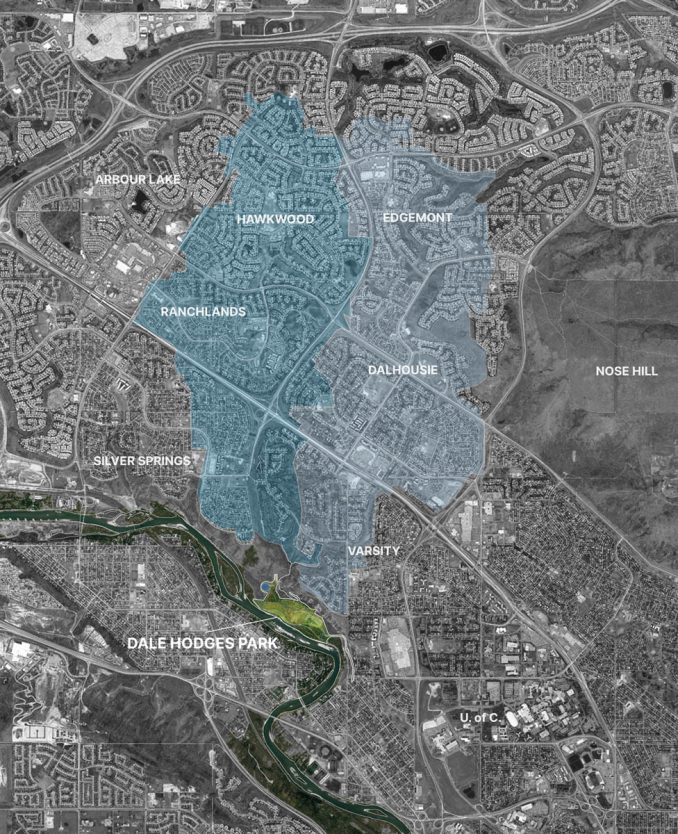
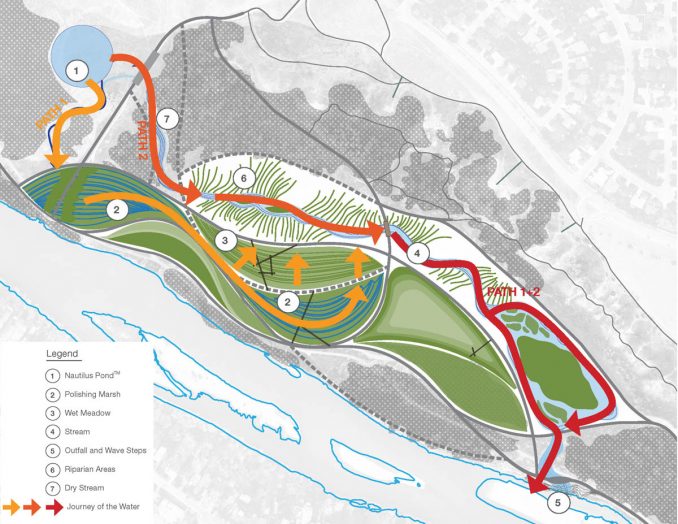
This project was a unique opportunity to renew how people relate to the process of urban stormwater and to reconsider the place-making potential of infrastructure. Led by an artist group as part of a City program embedding artists within infrastructure projects, the multidisciplinary team of artists, landscape architects, stormwater engineers and environmental designers worked collaboratively to fulfill the functional and artistic intentions of the project. The multidisciplinary approach empowered each team to build upon the collective knowledge and creativity to achieve this incredibly valuable and strategic park.
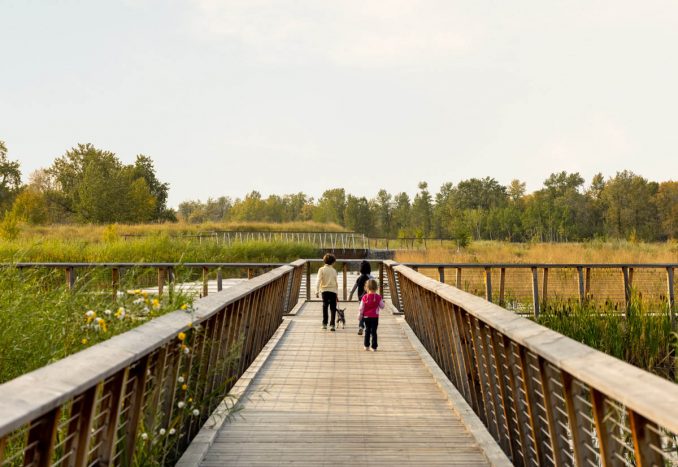
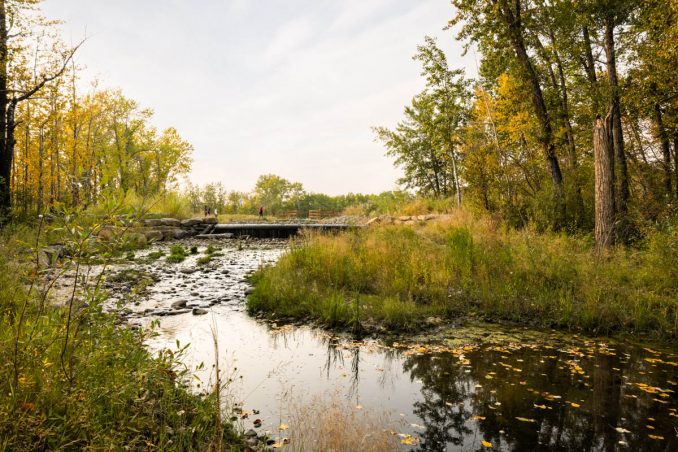
This project is unique in how the requirement for stormwater treatment was embraced as an opportunity to create new experiences for park users and a diverse range of upland, riparian and aquatic habitats. The concept uses stormwater to create habitat, express its movement and make its journey apparent at each treatment stage, creating a visceral experience of the water’s movement throughout the park. The story begins as water enters the park into the Nautilus Pond, an innovative clarifying pond, from there, water cascades through built structures and streams into a series of polishing marshes, wet meadows, riparian areas, and a restored stream. In a typical year, this system removes 85,000 kg of TSS that would otherwise be discharged to the Bow River.
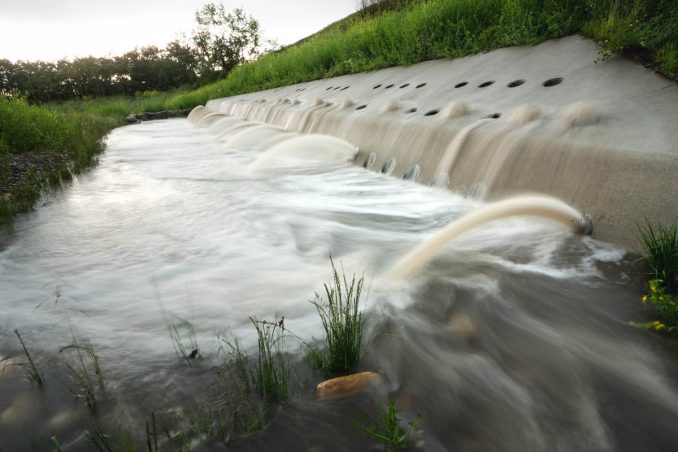
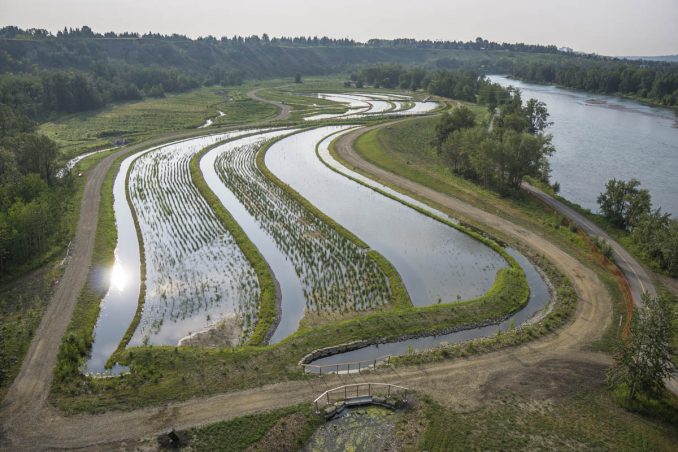
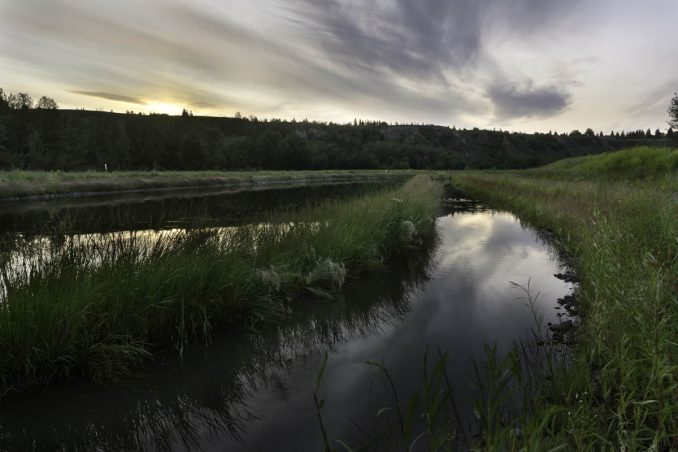
Riparian morphological forms inspired the design and fabric of the park, creating opportunities for water treatment and interpretation of the landscape patterns. The polishing marshes follow sweeping curves reminiscent of anabranches and river scrolls that evolve when a channel diverges and rejoins a river. A pathway along a scroll provides access to the water while elevated, crisscrossing boardwalks contrast the elegance of the natural patterns. The emergent vegetation zones throughout the marshes provide additional filtration and critical waterfowl habitat. The outlet stream is a restored seasonal creek that mimics alluvial side-channel formations and discharges to an important trout rearing habitat, serving as a refuge during river flood conditions.
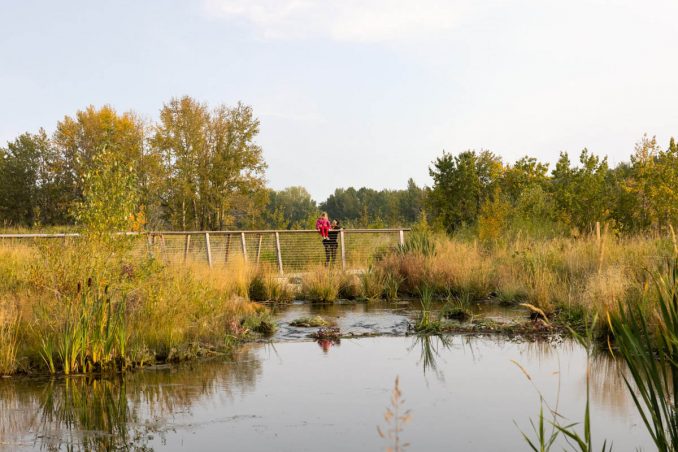
The project has resulted in numerous positive impacts. The multidisciplinary design and a robust public and stakeholder engagement process has led to widespread public praise of the park. Ecological systems in the park are now rich and diverse, with thriving native vegetation and wildlife. As a new type of high-performance public space, the park achieves multiple infrastructure requirements through a beautiful open space, a rethinking of urban stormwater providing ecosystem services and enhancing the quality of everyday life.
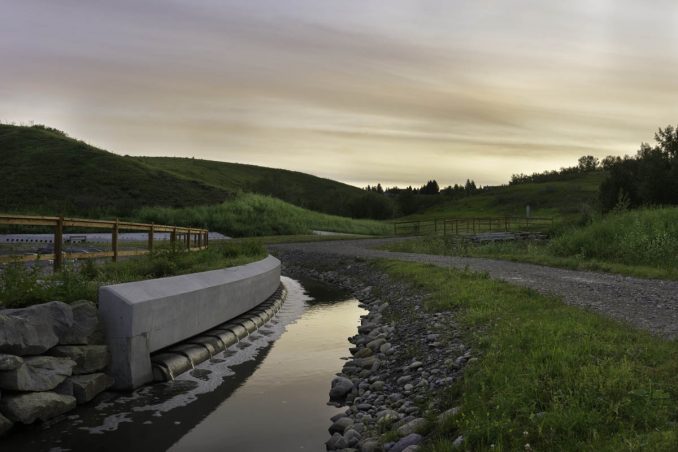
Dale Hodges Park
Location: Calgary, Alberta, Canada
Project Credits: O2 Planning & Design, Sans façon, Source2Source, AECOM, City of Calgary
Image Credits: O2 Planning & Design, Sans façon
